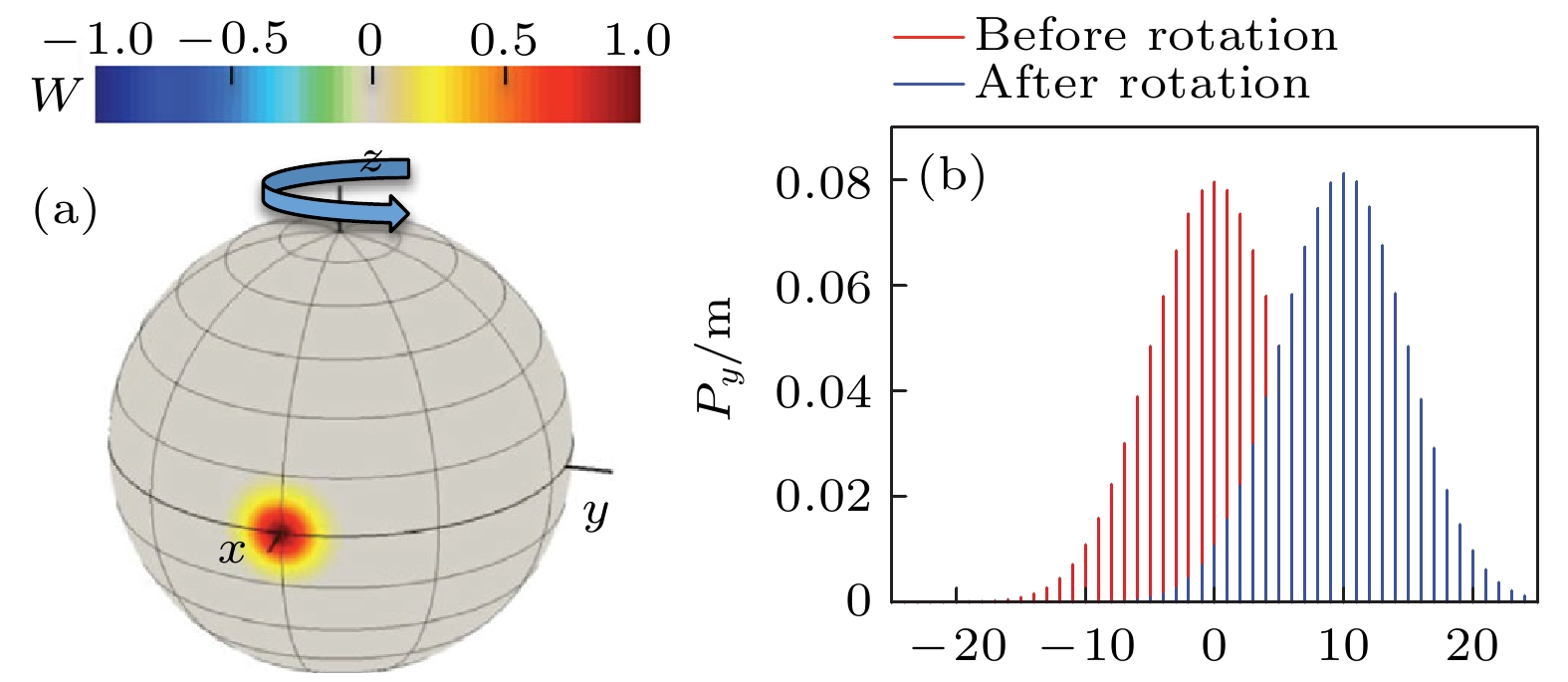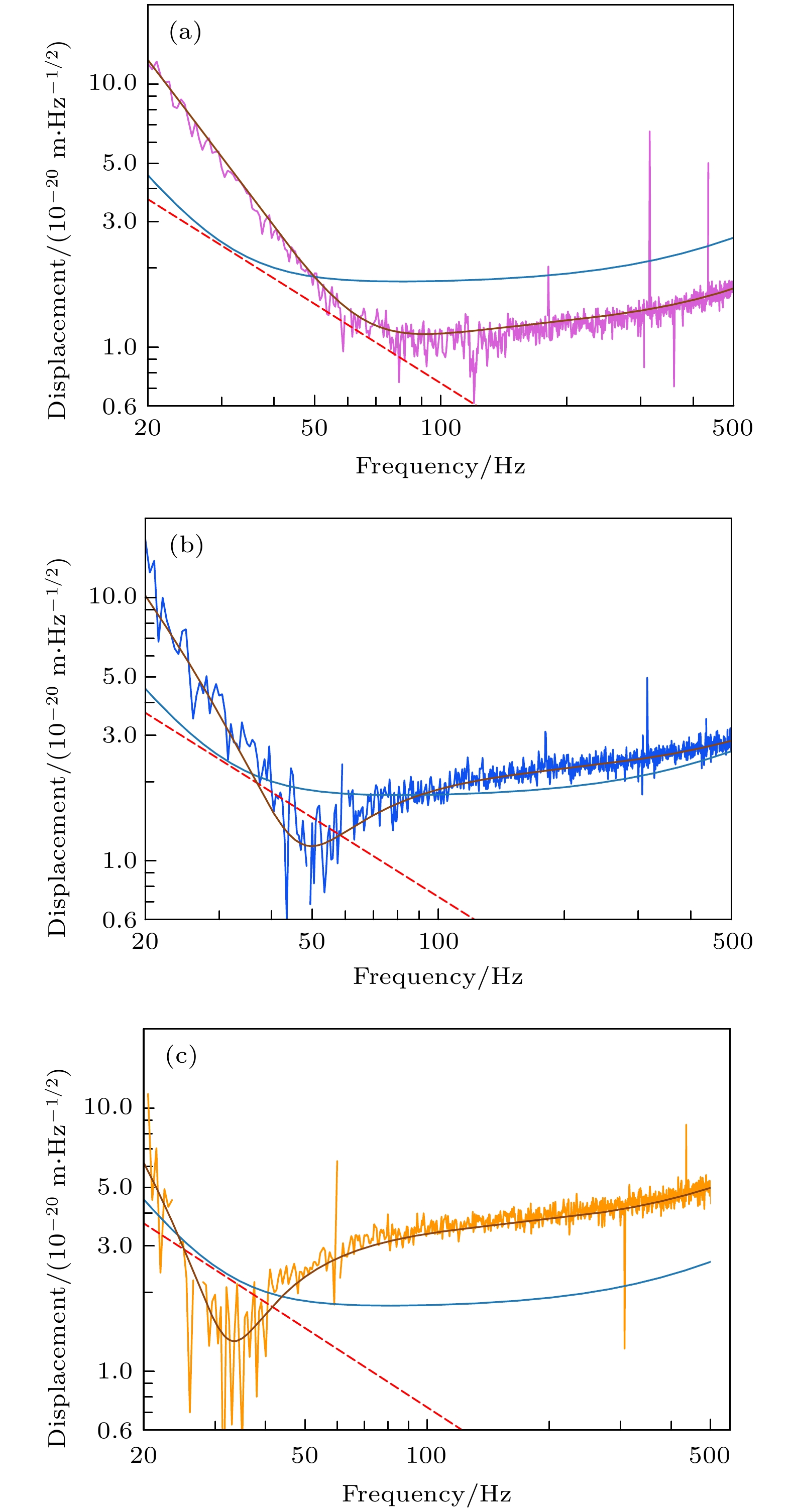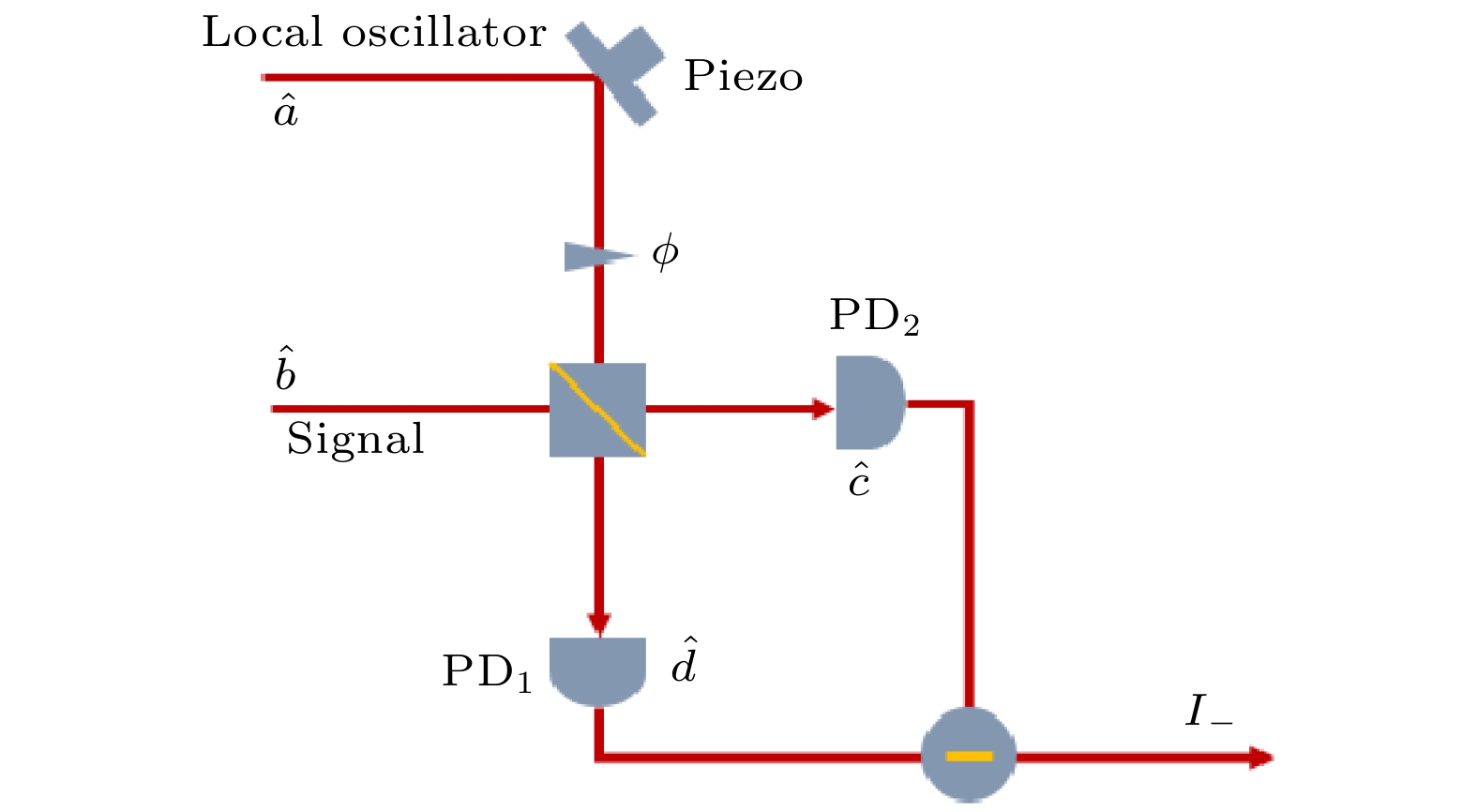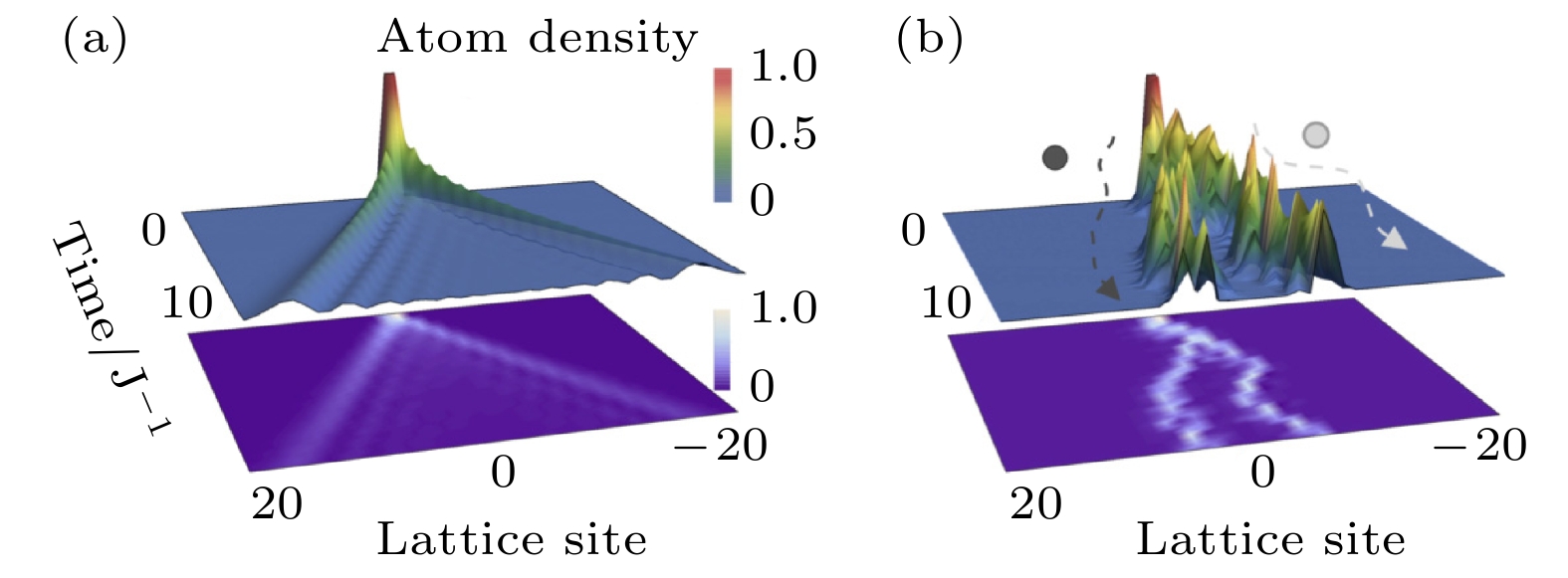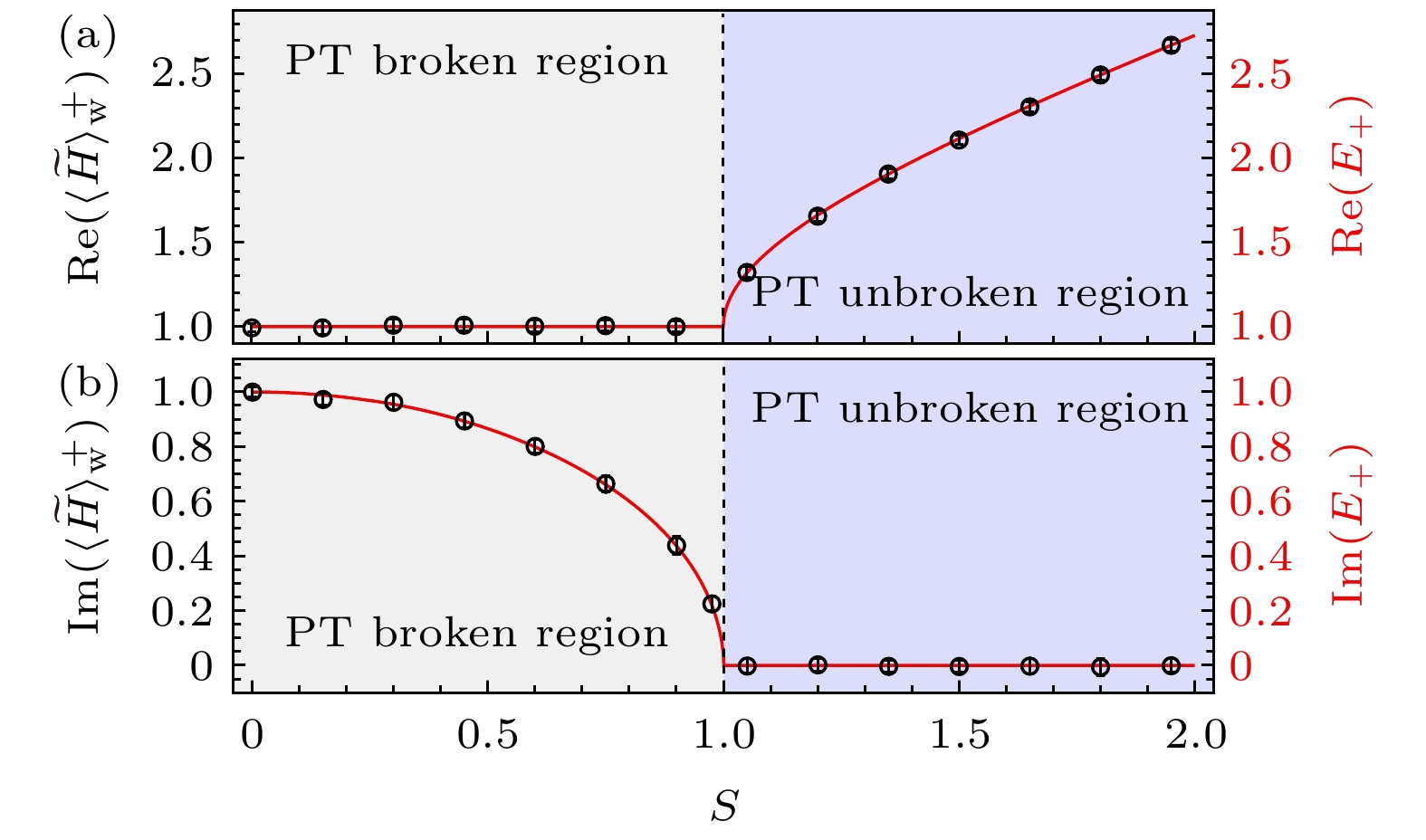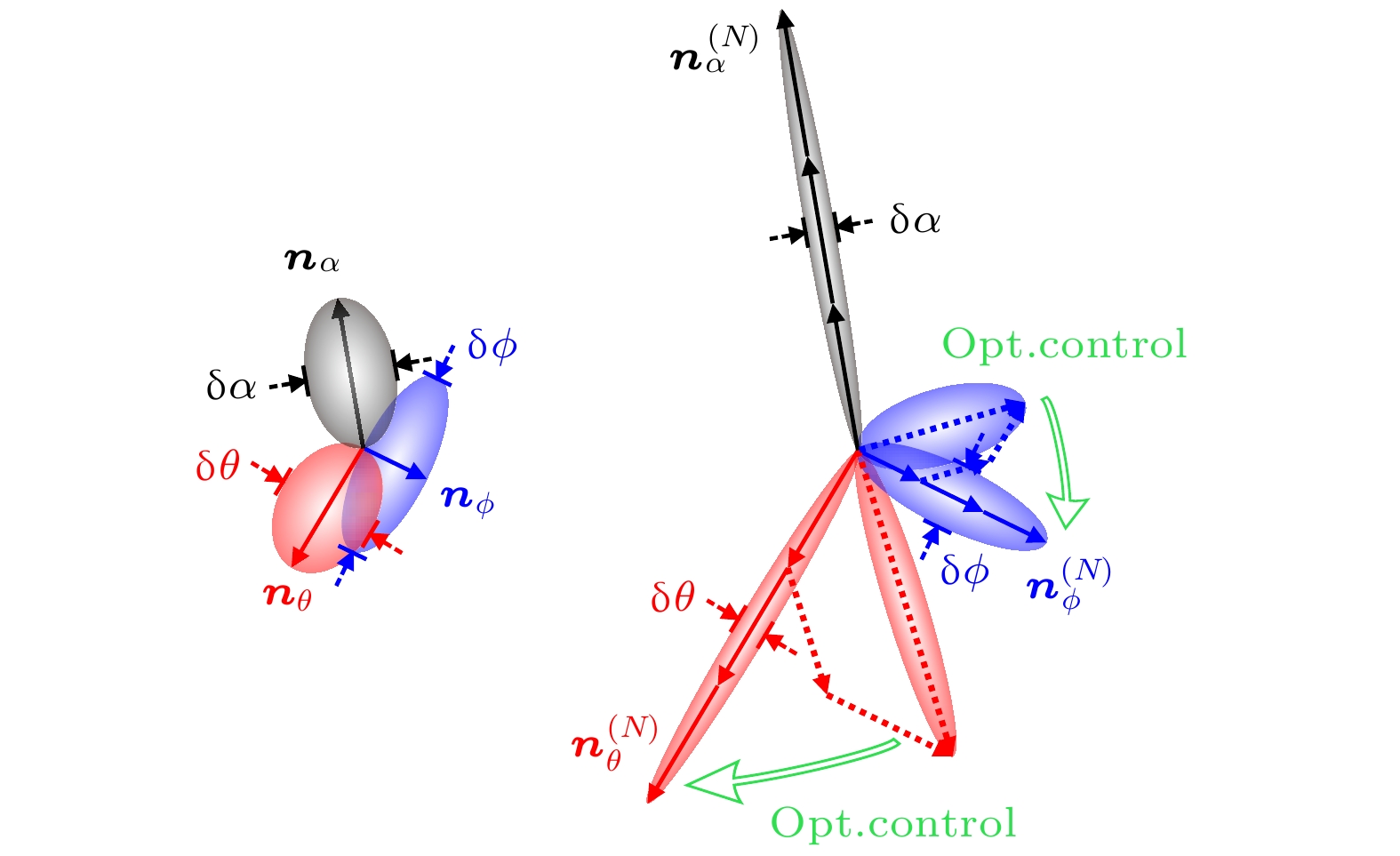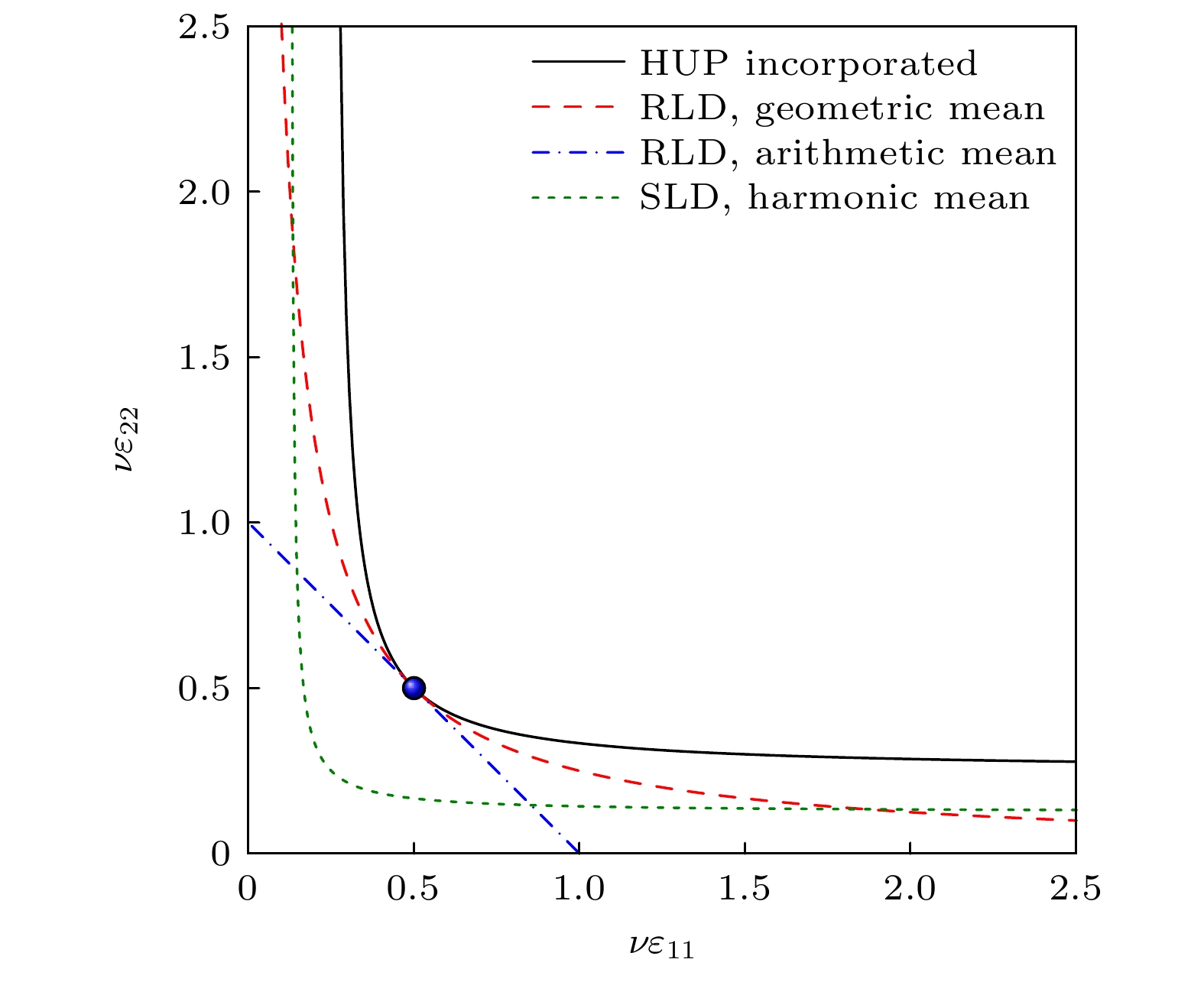-
量子精密测量根据量子力学的基本原理, 利用光、原子、磁之间的相互作用对待测物理量进行测量. 随着实验条件和技术的成熟, 如何利用干涉仪进一步提高位相信号这一物理量的测量精度从而打破散粒噪声的限制、突破标准量子极限并逼近海森伯极限成为研究的前沿课题. 本文阐述了利用线性干涉仪(包括原子/光子干涉仪)与非线性干涉仪调用不同阶段的量子资源在测量过程中提高参数评估精度的几种方法, 通过向干涉仪中输入非经典态来实现高精度测量, 如压缩态、双数态、NOON态等, 还介绍了为直接观测量子态而发展出的弱测量及其在非厄米系统中的应用和为消除参数之间精度制衡而提出的多参数测量. 最后, 对几种测量方法进行了分析比较, 并展望了量子精密测量的发展前景.Quantum precision measurement is based on the basic principle of quantum mechanics by using the interaction between light, atoms and magnetism to measure physical quantities, also known as precision measurements based on microscopic particle systems and their quantum states. As an important means of quantum precision measurement, interferometer precision measurement technology has great application value in quantum communication. The linear interferometer measures the magnitude of the physical quantity by using the phase change obtained from the measurements, but measurement accuracy is limited and unable to meet the requirements of today's scientific problems for the precision measurement of some physical quantities. On this basis, nonlinear interferometer is able to take advantage of the quantum entangled state, that is, using the two light fields of quantum correlation characteristics to realize quantum enhanced precision measurement, thus greatly improving the measurement sensitivity, Therefore, the scope of application is wider, but the preparation of quantum entangled states has many limitations in practical manipulation. With the maturity of experimental conditions and technology, how to use both of these interferometers to further improve the measurement accuracy of the phase signal so as to break the limitation to shot noise, breaking the standard quantum limit and even approaching to the Heisenberg limit has become a frontier research topic . In this paper, we introduce several methods to improve the accuracy of parameter evaluation in the measurement process by using linear (including an atomic/photon interferometer) and nonlinear interferometer to call quantum resources at different stages. High-precision measurement can be achieved by inputting non-classical states into the interferometer, such as compressed state, bi-fock state, and NOON state. And we also introduce the weak measurement developed for the direct observation of quantum states and its application to non-Hermitian systems, and the multiparameter measurement proposed to eliminate the accuracy balance between parameters. Compared with the first two measurement methods, weak measurement method is based on the weak value amplification principle of an indirect measurement. Measurements are performed virtually without perturbing the quantum system, which does not lead the wave function to collapse, the weak value of the real and virtual part have different physical significance, The combination of weak measurement theory and non-Hermitian system also further improves the measurement sensitivity. Multi-parameter measurement uses quantum entanglement, quantum control and other quantum resources to make the measurement progress reach the Heisenberg limit, which is the current research hotspot in the field of precision measurement. Furthermore, we present a conjecture whether there will be multi-atomic mixing measurements based on atomic spin effects or ultra-high sensitivity measurement instruments with precision of fT or even aT by using other particles detection. Finally, several measurement methods are analyzed and compared with each other, and the development prospect of quantum precision measurement is forecasted.
-
Keywords:
- quantum precision measurement /
- interferometer /
- Heisenberg limit /
- standard quantum limit /
- non-Hermitian system
[1] Müntinga H, Ahlers H, Krutzik M, Wenzlawski A, Arnold S, Becker D, Bongs K, Dittus H, Duncker H, Gaaloul N, Gherasim C, Giese E, Grzeschik C, Hänsch T, Hellmig O, Herr W, Herrmann S, Kajari E, Kleinert S, Lämmerzahl C, Lewoczko-Adamczyk W, Malcolm J, Meyer N, Nolte R, Peters A, Popp M, Reichel J, Roura A, Rudolph J, Schiemangk M, Schneider M, Seidel S, Sengstock K, Tamma V, Valenzuela T, Vogel A, Walser R, Wendrich T, Windpassinger P, Zeller W, Zoest T, Ertmer W, Schleich W, Rasel E 2013 Phys. Rev. Lett. 110 093602
 Google Scholar
Google Scholar
[2] Dolde F, Fedder H, Doherty M, Nöbauer T, Rempp F, Balsubramanian G, Wolf T, Reinhard F, Hollenberg L, Jelezko F, Wrachtrup J 2011 Nat. Phys. 7 459
 Google Scholar
Google Scholar
[3] Cooper J, Hallwood D, Dunningham J 2010 Phys. Rev. A 81 043624
 Google Scholar
Google Scholar
[4] Boto A, Kok P, Abrams D, Braunstein S, Williams C, Dowling J 2000 Phys. Rev. Lett. 85 2733
 Google Scholar
Google Scholar
[5] Ockeloen C, Schmied R, Riedel M, Treutlein P 2013 Phys. Rev. Lett. 111 143001
 Google Scholar
Google Scholar
[6] Georgescu I 2014 Nat. Phys. 10 474
 Google Scholar
Google Scholar
[7] Wasilewski W, Jensen K, Krauter H, Renema J, Balabas M, Polzik E 2010 Phys. Rev. Lett. 104 133601
 Google Scholar
Google Scholar
[8] Ke Y, Huang J, Zhuang M, Lu B, Lee C 2018 Phys. Rev. A 98 053826
[9] Wineland D 2013 Rev. Mod. Phys. 85 1103
 Google Scholar
Google Scholar
[10] Blatt R, Wineland D 2008 Nature 453 1008
 Google Scholar
Google Scholar
[11] Leibfried D, DeMarco B, Meyer V, Rowe M, Ben-Kish A, Britton J, Itano W, Jelenković B, Langer C, Rosenband T, Wineland D 2002 Phys. Rev. Lett. 89 247901
 Google Scholar
Google Scholar
[12] Riedel M, Böhi P, Li Y, Hänsch T, Sinatra A, Treutlein P 2010 Nature 464 1170
[13] Gross C, Zibold T, Nicklas E, Estève J, Oberthaler M 2010 Nature 464 1165
 Google Scholar
Google Scholar
[14] Huver S, Wildfeuer C, Dowling J 2008 Phys. Rev. A 78 063828
 Google Scholar
Google Scholar
[15] Afek I, Ambar O, Silberberg Y 2010 Science 328 879
 Google Scholar
Google Scholar
[16] Simmons S, Jones J, Karlen S, Ardavan A, Morton J 2010 Phys. Rev. A 82 022330
 Google Scholar
Google Scholar
[17] Nie X, Li J, Cui J, Luo Z, Huang J, Chen H, Lee C, Peng X, Du J 2015 New J. Phys. 17 053028
 Google Scholar
Google Scholar
[18] Nie X, Huang J, Li Z, Zheng W, Lee C, Peng X, Du J 2018 Sci. Bull. 63 469
 Google Scholar
Google Scholar
[19] Braunstein S 1992 Phys. Rev. Lett. 69 3598
 Google Scholar
Google Scholar
[20] Ramsey N F 1949 Phys. Rev. 76 996
 Google Scholar
Google Scholar
[21] Ramsey N F 1950 Phys. Rev. 78 695
 Google Scholar
Google Scholar
[22] 邹奕权 2018 博士学位论文 (北京: 清华大学)
Zou Y Q 2018 Ph. D. Dissertation (Beijing: Tsinghua University) (in Chinese)
[23] The LIGO Scientific Collaboration 2011 Nat. Phys. 7 962
 Google Scholar
Google Scholar
[24] Henning V, Moritz M, Karsten D, Roman S 2016 Phys. Rev. Lett. 117 110801
 Google Scholar
Google Scholar
[25] Abadie J, Abbott B P, Abbott R, Abbott T D, Abernathy M, Adams C, Adhikari R, Affeldt C, Allen B, Allen G S, Amador Ceron E, Amariutei D, Amin R S, Anderson S B, Anderson W G, Arai K, Arain M A, Araya M C, Aston S M, Atkinson D, Aufmuth P, Aulbert C, Aylott B E, Babak S, Baker P, Ballmer S, Barker D, Barr B, Barriga P, Barsotti L, Barton M A, Bartos I, Bassiri R, Bastarrika M, Batch J, Bauchrowitz J, Behnke B, Bell A S, Belopolski I, Benacquista M, Berliner J M, Bertolini A, Betzwieser J, Beveridge N, Beyersdorf P T, Bilenko I A, Billingsley G, Birch J, Biswas R, Black E, Blackburn J K, Blackburn L, Blair D, Bland B, Bock O, Bodiya T P, Bogan C, Bondarescu R, Bork R, Born M, Bose S, Brady P R, Braginsky V B, Brau J E, Breyer J, Bridges D O, Brinkmann M, Britzger M, Brooks A F, Brown D A, Brummitt A, Buonanno A, Burguet-Castell J, Burmeister O, Byer R L, Cadonati L, Camp J B, Campsie P, Cannizzo J, Cannon K, Cao J, Capano C D, Caride S, Caudill S, Cavagliá M, Cepeda C, Chalermsongsak T, Chalkley E, Charlton P, Chelkowski S, Chen Y, Christensen N, Cho H, Chua S S Y, Chung S, Chung C T Y, Ciani G, Clara F, Clark D E, Clark J, Clayton J H, Conte R, Cook D, Corbitt T R, Cordier M, Cornish N, Corsi A, Costa C A, Coughlin M, Couvares P, Coward D M, Coyne D C, Creighton J D E, Creighton T D, Cruise A M, Cumming A, Cunningham L, Cutler R M, Dahl K, Danilishin S L, Dannenberg R, Danzmann K, Daudert B, Daveloza H, Davies G, Daw E J, Dayanga T, DeBra D, Degallaix J, Dent T, Dergachev V, DeRosa R, DeSalvo R, Dhurandhar S, DiGuglielmo J, Di Palma I, Díaz M, Donovan F, Dooley K L, Dorsher S, Drever R W P, Driggers J C, Du Z, Dumas J C, Dwyer S Eber 2011 Nat. Phys. 7 962
[26] Qiu C, Chen S Y, Chen L Q, Chen B, Guo J, Ou Z Y, Zhang W P 2016 Optica 3 000775
[27] Pezzè L, Smerzi A, Oberthaler M K, Schmied R, Treutlein P 2018 Rev. Mod. Phys. 90 035005
 Google Scholar
Google Scholar
[28] Kasevich M A, Chu S 1991 Phys. Rev. Lett. 67 181
 Google Scholar
Google Scholar
[29] Peters A 1998 Ph. D. Dissertation (Palo Alto: Stanford University)
[30] Geiger R, Me´noret V, Stern G, Zahzam N, Cheinet P, Battelier B, Villing A, Moron F, Lours M, Bidel Y, Bresson A, Landragin A, Bouyer P 2011 Nat. Commun. 2 474
 Google Scholar
Google Scholar
[31] Anderson M H, Ensher J R, Matthews M R 1995 Science 269 198
 Google Scholar
Google Scholar
[32] Higbie J M, Sadler L E, Inouye S, Chikkatur A P, Leslie S R, Moore K L, Savalli V, Stamper-Kurn D M 2005 Phys. Rev. Lett. 95 050401
 Google Scholar
Google Scholar
[33] Sadler L E, Higbie J M, Leslie S R, Vengalattore M, Stamper-Kurn D M 2006 Nature 443 0605351
 Google Scholar
Google Scholar
[34] Yurke B, McCall S L, Klauder J R 1986 Phys. Rev. A 33 4033
 Google Scholar
Google Scholar
[35] Plick W N, Dowling J P, Agarwal G S 2010 New J. Phys. 12 083014
 Google Scholar
Google Scholar
[36] Kong J, Jing J, Wang H, Hudelist F, Liu C, Zhang W 2013 Appl. Phys. Lett. 102 011130
 Google Scholar
Google Scholar
[37] Chen B, Qiu C, Chen S Y, Guo J X, Ou Z Y, Zhang W P 2015 Phys. Rev. Lett. 115 043602
 Google Scholar
Google Scholar
[38] Ou Z Y 2012 Phys. Rev. A 85 023815
 Google Scholar
Google Scholar
[39] Xiao M, Wu L A, Kimble H 1987 Phys. Rev. Lett. 59 278
 Google Scholar
Google Scholar
[40] Barnett S M, Fabre C, Maître A 2003 Eur. Phys. J. D 22 513
 Google Scholar
Google Scholar
[41] Scully M O, Zubairy M S 1997 Quantum Optics (Cambridge: Cambridge University Press)
[42] Yuen H P, Shapiro J H 1979 Opt. Lett. 4 334
 Google Scholar
Google Scholar
[43] Wu L A, Kimble H, Hall J, Wu H 1986 Phys. Rev. Lett. 57 2520
 Google Scholar
Google Scholar
[44] Zhang Y, Wang H, Li X Y, Jing J T, Xie C D 2000 Phys. Rev. A 62 023813
 Google Scholar
Google Scholar
[45] Goda K, Miyakawa O, Mikhailov E E, Saraf S, Adhikari R, McKenzie K, Ward R, Vass S, Winstein A J, Maval-vala N 2008 Nat. Phys. 4 472
 Google Scholar
Google Scholar
[46] The LIGO Scientific Collaboration 2013 Nat. Photonics 7 613
 Google Scholar
Google Scholar
[47] Vahlbruch H, Mehmet M, Danzmann K, Schnabel R 2016 Physical Review Lett. 117 110801
[48] Yu H C, McCuller L, Tse M, Kijbunchoo N, Barsotti L, Mavalvala N 2020 Nature 583
[49] 刘宏宇 2019 博士学位论文 (天津: 天津大学)
Liu H Y 2019 Ph. D. Dissertation (Tianjin: Tianjin University) (in Chinese)
[50] Slusher R E, Hollberg L W, Yurke B, Mertz C J, Valley J F 1985 Phys. Rev. Lett. 55 2409
 Google Scholar
Google Scholar
[51] Zhang Y, Su H, Xie C, Peng K C 1999 Phys. Lett. 259 171
 Google Scholar
Google Scholar
[52] Boyer V, Marino A M, Pooser R C, Lett P D 2008 Science 321 544
 Google Scholar
Google Scholar
[53] Glorieux Q, Guidoni L, Guibal S, Likforman J P, Coudreau T 2011 Phys. Rev. A 84 053826
 Google Scholar
Google Scholar
[54] Liu S, Lou Y, Jing J 2019 Phys. Rev. Lett. 123 113602
 Google Scholar
Google Scholar
[55] Liu Q, Wu L N, Cao J H, Mao T W, Li W X, Guo F S, Tey K M, You L 2021 Nat. Phys. 18 167
 Google Scholar
Google Scholar
[56] Marino M A, Corzo N V, Trejo, Lett P D 2012 Phys. Rev. A 86 023844
 Google Scholar
Google Scholar
[57] Yuen H P, Chan V W 1983 Opt. Lett. 8
[58] Abbas G L, Chan V W, Yee T K 1983 Opt. Lett. 8
[59] 潘晓州 2019 博士学位论文(上海: 华东师范大学)
Pan X Z 2019 Ph. D. Dissertation (Shanghai: East China Normal University) (in Chinese)
[60] Bollinger J J, Itano W M, Wineland D J, Heinzen D J 1996 Phys. Rev. A 54 R4649
 Google Scholar
Google Scholar
[61] Gerry C C 2000 Phys. Rev. A 61 043811
 Google Scholar
Google Scholar
[62] 李栋 2016 博士学位论文(上海: 华东师范大学)
Li D 2016 Ph. D. Dissertation (Shanghai: East China Normal University) (in Chinese)
[63] Kitagawa M, Ueda M 1993 Phys. Rev. A 47 5138
 Google Scholar
Google Scholar
[64] Szigeti S S, Nolan S P, Close J D 2020 Phys. Rev. Lett. 125 100402
 Google Scholar
Google Scholar
[65] Lee C 2006 Phys. Rev. Lett. 97 150402
 Google Scholar
Google Scholar
[66] Lee C 2009 Phys. Rev. Lett. 102 070401
 Google Scholar
Google Scholar
[67] Hu Y, Feng M, Lee C 2012 Phys. Rev. A 85 043604
 Google Scholar
Google Scholar
[68] Luo C, Huang J, Zhang X, Lee C 2017 Phys. Rev. A 95 023608
 Google Scholar
Google Scholar
[69] Zhuang M, Huang J, Lee C 2018 Phys. Rev. A 98 033603
 Google Scholar
Google Scholar
[70] Ma J, Huang Y, Wang X, Sun C 2011 Phys. Rev. A 84 039907
 Google Scholar
Google Scholar
[71] Huang J, Qin X, Zhong H, Ke Y, Lee C 2015 Sci. Rep. 517894
[72] Huang J, Zhuang M, Lu B, Ke Y, Lee C 2018 Phys. Rev. A 98 012129
 Google Scholar
Google Scholar
[73] Braunstein S, Caves C 1994 Phys. Rev. Lett. 72 3439
 Google Scholar
Google Scholar
[74] 胥亮, 张利剑 2021 激光与光电子学进展 58 49
 Google Scholar
Google Scholar
Xu L, Zhang L J 2021 Laser & Optoelectronics Progress 58 49
 Google Scholar
Google Scholar
[75] 张晓东, 於亚飞, 张智明 2021 物理学报 70 240302
 Google Scholar
Google Scholar
Zhang X D, Yu Y F, Zhang Z M 2021 Acta Phys. Sin. 70 240302
 Google Scholar
Google Scholar
[76] Dressel J, Malik M, Miatto F M, Filippo M M, Andrew N, Jordan Robert W B 2014 Rev. Mod. Phys. 86 307
 Google Scholar
Google Scholar
[77] Chen G, Aharon N, Sun Y 2018 Nat. Commun. 9 1
 Google Scholar
Google Scholar
[78] Ogawa K, Yasuhiko O, Kobayashi H 2019 New J. Phys. 21 043013
 Google Scholar
Google Scholar
[79] 李钦政 2015 硕士学位论文 (上海: 上海交通大学)
Li Q Z 2015 M. S. Thesis (Shanghai: Shanghai Jiao Tong University) (in Chinese)
[80] Yuto A, Masahito U 2017 Phys. Rev. A 95 022124
 Google Scholar
Google Scholar
[81] Yu S, Meng Y, Tang J S, Xu X Y, Wang Y T, Yin P, Ke Z J, Liu W, Li Z P, Yang Y Z, Chen G, Han Y J, Li C F, Guo G C 2020 Phys. Rev. Lett. 124 230402
 Google Scholar
Google Scholar
[82] Hou Z, Tang J F, Chen H 2021 Sci. Adv. 7 eabd2986
 Google Scholar
Google Scholar
[83] Lu X M, Wang X G 2021 Phys. Rev. Lett. 126 7
[84] Du W, Kong J, Bao G Z, Yang P Y, Jia J, Ming S, Yuan C H, Chen J F, Ou Z Y, Morgan W M, Zhang W P 2022 Phys. Rev. Lett. 128 033601
 Google Scholar
Google Scholar
-
图 1 Mach-Zehnder干涉仪. a, b为入射端; e, g为输出端;
$ {\mathrm{U}}_{1} $ 为分束镜;$ {\mathrm{U}}_{2} $ 为合束镜. 入射光a和b经过第一个分束镜$ {\mathrm{U}}_{1} $ 后, 产生的光场线性映射到c和d两个路径上, 然后进行相位积累后再合束在一起, 实现相干态叠加, 最后输出探测场是e和gFig. 1. Schematic diagram of Mach-Zehnder interferometer. a, b are incident end; e, g are output end;
$ {\mathrm{U}}_{1} $ is the beam-splitting mirrors;$ {\mathrm{U}}_{2} $ is the beam-closing mirrors. After the incident light a and b pass through the first beam division mirror$ {\mathrm{U}}_{1} $ , the resulting light field is linearly mapping to the two paths c and d, then phase accumulation and then beam together to achieve coherent state superposition, and the final output detection fields are e and g.图 2 在Bloch球上的Ramsey干涉仪的序列 (a)第一个光束对应于一个量子态围绕
$ {J}_{x} $ 轴旋转$ \mathrm{\pi }/2 $ , 输入态为指向北极的自旋相干态; (b)自由演化得到相位差$ \theta $ , 即围绕$ {J}_{z} $ 旋转$\theta $ ; (c)第二个分束器再次围绕$ {J}_{x} $ 轴旋转$ \mathrm{\pi }/2 $ ; (d) Ramsey序列的整体效应是初始状态沿$ {J}_{y} $ 轴旋转一个角度$ \theta $ . 通过测量$ {J}_{z} $ 即可读出$ \theta $ [22]Fig. 2. Sequences of the Ramsey interferometer are illustrated with the Bloch sphere: (a) First beam corresponds to a
$ \mathrm{\pi }/2 $ rotation of the quantumstate around the$ {J}_{x} $ axis, and he input state is a CSS pointing toward the north pole; (b) free evolution picks up a phase difference θ, which corresponds to a rotation around the$ {J}_{z} $ by an angle of$ \theta $ ; (c) second beam splitter again revolve around$ {J}_{x} $ axis of$ \mathrm{\pi }/2 $ ; (d) overall effect for the Ramsey sequence is a rotation of the initial state by an angle θ along the$ {J}_{y} $ axis. By measuring the$ {J}_{z} $ can read$ \theta $ [22].图 3 LIGO探测结果[25], 红线有压缩光的观测噪声, 黑线为无压缩光的观测噪声
Fig. 3. Detection results of LIGO detector, red line compression light observation noise, black line for no compression light observation noise.
图 4 (a)一个沿正x轴的自旋相干态在Bloch球上的旋转; (b)对应的沿y方向的的自旋概率为
${P}_{y}\left(m\right)={\left|\langle{m}_{y}|\varPsi\rangle\right|}^{2}$ (右图)[27]Fig. 4. (a)A coherent spin state along the x axis in the rotation of the Bloch sphere; (b) spin probability
${P}_{y}\left(m\right)= $ $ {\left|\langle{m}_{y}|\varPsi\rangle\right|}^{2}$ along the$ y $ direction[27].图 5 非线性干涉仪. 将分束镜和合束镜用非线性的哈密顿量压缩到哈密顿量来产生,
$ {U}_{1} $ 为分束镜,$ {U}_{2} $ 为合束镜. 将相同的压缩机制进行反压缩成真空态后, 信号便得到了放大Fig. 5. Schematic diagram of the nonlinear interferometer. The beam-splitting mirrors and beam-closing mirrors are produced by squeezing to the Hamiltonian with a nonlinear Hamiltonian,
$ {U}_{1} $ is the beam-splitting mirrors,$ {U}_{2} $ is the beam-closing mirrors. After the same compression mechanism is inversely compressed into a vacuum state, the signal is amplified.图 6 不同压缩角时的量子噪声谱 (a)7°; (b) 24°; (c)46°. 每个数据集都采用经典噪声减法绘制, 并绘制了有注入压缩态时相应的量子噪声模型曲线(铜线)和没有注入压缩态的模型(蓝线)以进行比较. 结果表明随着注入状态的变化, 量子辐射压力噪声的贡献可以增加和减少[48]
Fig. 6. Quantum noise spectra at different additional squeezing angles: (a) 7°; (b)24°; (c) 46°. Each dataset is plotted with the classical noise subtraction, The corresponding quantum noise model curve (copper line) with the injected compressed state and the uninjected compressed state model (blue line) are also plotted for comparison. The results show that, the quantum radiation pressure noise contribution can be increased and decreased as the injected state is varied[48].
图 7 非线性干涉仪原理图. OPA1-2, 光学参量放大器; HD1-2, 平衡零拍探测器,
${\hat{a}}_{0}$ 为信号光场,${\hat{b}}_{0}$ 为闲频光场; G1, g1, G2, g2为参量放大器振幅增益系数[49]. 将相干态$|\alpha \rangle$ 光场和真空态$|0\rangle$ 光场同时输入OPA1中进行非相敏放大, 利用产生的具有纠缠特性的闲频光场与信号光场作为探测光场, 将被测信号加载到纠缠光上, 然后将携带被测信号的两束光同时输入OPA2中进行相敏放大Fig. 7. Principle diagram of the nonlinear interferometer. OPA1-2, optical parametric amplifier; HD1-2, setup of balanced homodyne detection,
${\hat{a}}_{0}$ is signal light field,${\hat{b}}_{0}$ is idle frequency light field; G1, g1, G2, g2 are parametric amplifier amplitude gain coefficient. The coherent state$|\alpha \rangle$ light field and vacuum state$|0\rangle$ light field simultaneously input in OPA1 for nonphase sensitive amplification, using the entanglement of idle frequency light field and signal light field as detection light field, the measured signal on the entangled light, and then carry the two light of the measured signal simultaneously input OPA2 for phase sensitive amplification[49].图 8 平衡零拍探测装置[59]. 将输入光场
$ a $ 与待测光场$ b $ 通过50∶50分束器进行合束, 合束后, 用光电探测器分别对输出的两束光场$ c $ 与$ d $ 进行光强探测, 然后将探测信号相减, 得到的即为待测光场的正交分量值Fig. 8. Setup of balanced homodyne detection [59]. The input light fields
$ a $ and$ b $ light fields to be measured are combined through a 50∶50 beam splitter. After the beam combined, the two output light fields$ c $ and$ d $ are detected by photodetector, and then let the detection signal subtraction. The result is the orthogonal component value of the light field to be measured.图 9 左图为不同的量子态的旋转, 右图为对应不同量子态沿y方向的自旋概率为
${P}_{y}\left(m\right)={\left|\langle{m}_{y}|\varPsi\rangle\right|}^{2}$ (a)自旋压缩态; (b)双Fock态, 由不可区分的玻色粒子组成,$|\uparrow \rangle$ 和$|\downarrow \rangle$ 的原子数相等, 在Bloch球中, 沿纬度方向的量子投影噪声为零即不确定度为零, 但沿经度方向的分布则完全不确定; (c) NOON态[27]Fig. 9. Rotation of different quantum states (left), spin probability
${P}_{y}\left(m\right)={\left|\langle{m}_{y}|\varPsi \rangle\right|}^{2}$ along the$ y $ direction of different quantum states (right): (a) Spin-squeezed state. (b) twin-Fock state. Comconsists of indistinguishable Boseonic particles, with equal atomic numbers for$|\uparrow\rangle$ and$|\downarrow\rangle.$ The quantum projection noise along the latitude direction is zero and the uncertainty is zero, but the distribution along the longitude direction is completely uncertain. (c) NOON state [27].图 10 弱值放大原理图,
$ g $ 为耦合强度,$ A $ 为量子系统的可观测量,$ P $ 为测量仪器态的可观测量,$|{\psi }_{\mathrm{i}}\rangle$ 为测量仪器与量子系统的联合态,$ \delta \left(t-{t}_{0}\right) $ 为该哈密顿量在$ {t}_{0} $ 时刻的瞬时相互作用,$|\phi \rangle$ 为仪器态,$|{\phi }_{\mathrm{f}}\rangle$ 为后选择成功的测量仪器态[74]Fig. 10. Schematic for the weak-value amplification, the g is the coupling strength, the A is the observable of the quantum system, and the P is the observance of the measured instrumental state,
$|{\psi }_{\mathrm{i}}\rangle$ is the joint state of the measurement instrument and the quantum system,$ \delta \left(t-{t}_{0}\right) $ indicates the instantaneous interaction of this Hamiltonian at time$ {t}_{0} $ ,$|\phi \rangle$ is Instrument state,$|{\phi }_{\mathrm{f}}\rangle$ is the successfully post selective measurement instrument state[74].图 11 弱值实现实验装置图 (a)单模光纤射出的平行光符合高斯强度分布, 由1/4波片和半波片实现初始态, 偏振片形成后选择态, CCD 用来检测偏振相关的位移变化情况; (b)弱值实部的实验装置图; (c)弱值虚部的实验装置图[76]
Fig. 11. Experimental setup for showing how weak values can be obtained: (a) Light emitted from a single mode fiber is Gaussian distribution, which is collimated by a len and is preselected by an initial polarization state constructed by a quarter-wave plate (QWP) and a half-wave plate(HWP). A polarizer plays an role of postselection and the following CCD then measure the intensity dependent position information. (b) real weak value realization setup. (c) imaginary weak value realization setup[76].
图 12 弱测量结果示意图[76] (a)“扰动”(实线)和”无扰动“(虚线)在不同
$\varepsilon$ 情况下探测概率比较; (b)完全阶数情况下的(实线)和一阶弱值(虚线)在不同$\epsilon $ 情况下的比较, 在$\varepsilon $ 极小时, 二者近似Fig. 12. (a) Comparisons between perturbed situation (solid) and unperturbed situation (dashed) with different
$\varepsilon $ ; (b) diagram between exact ratio of$ {P}_{\varepsilon}/p $ (solid curve) and the first order approximation in weak measurement linear regime(dashed curve), both of them are approaching when the$\epsilon $ is ultra-small[76].图 14 (a)无测量的幺正演化; (b)弱测量下的连续演化[80]. 结果表明, 随着时间的演化, 若在没有进行测量或跃迁时为幺正演化, 会形成一个相对光滑的图形; 若投影到子空间或进行弱测量时, 会形成具有明显跳跃幅度的图形, 即为非厄米哈密顿量最终表达的效果
Fig. 14. (a) Without measurement: unitary evolution; (b) continuous evolution under the weak measurements[80]. The results show that with the evolution of time, a unitary evolution occurs when no measurements or transitions are made, forming a relatively smooth figure, if projected to the subspace or weak measurement, forming a figure with significant jump amplitude, that is, the final expression of the non-Hermitian Hamiltonian.
图 15 (a)PT对称系统构建逻辑图实验装置[81](流程见图). (b)图表和设置都分为6个模块: (1)系统准备和扩展; (2)预选状态准备; (3)指针状态准备; (4)指针与嵌入了PT对称系统的膨胀系统的耦合; (5)后选; (6) 弱值读出. HWP, 半波片; QWP, 1/4波片; BS, 分束器; PBS, 偏振分束器; PP, 相位板; BD, 光束置换器; ppKTP, 周期性极化的磷酸氧钛钾; BF, 带通滤波器; SPAD, 单光子雪崩二极管
Fig. 15. (a) Logic diagram of the construction of PT-symmetric system. (b) Experimental setup. Both the diagram and setup are divided into 6 modules: (1) system preparation and dilation; (2) preselection state preparation; (3) pointer state preparation; (4) coupling of the pointer and dilated system in which the PT-symmetric system is embedded; (5) postselection; (6) weak value readout. HWP, half-wave plate; QWP, quarter-waveplate; BS, beam splitter; PBS, polarizing beam splitter; PP, phase plate; BD, beam displacer; ppKTP, periodically poled potassium titanyl phosphate; BF, band-pass filter; SPAD, single-photon avalanche diode [81]
图 16 PT对称系统的能谱
$ {E}_{+}\left(s\right) $ 直接由弱值${\langle{\tilde{\boldsymbol{H}}\left(s\right)}\rangle}_{\mathrm{W}}^{+}$ 测量[81]. 带有误差条的黑色圆圈是弱值的实部和虚部, 红线是直接从PT对称哈密顿方程计算的相应本征能量. 即${E}_{+}\left(s\right){|}_{r=\sqrt{2}, \theta = {\mathrm{\pi }}/{4}}=1+\sqrt{{s}^{2}-1}$ Fig. 16. Energy spectrum
$ {E}_{+}\left(s\right) $ of the PT-symmetric systemdirectly measured by weak value${\langle{\tilde{\boldsymbol{H}}\left(s\right)}\rangle}_{\mathrm{W}}^{+}$ . The black circles with error bars are real and imaginary parts of the weak value, and the red lines are the corresponding eigenenergy directly calculated from the PT-symmetric Hamiltonian Eq. (1); i.e.,${E}_{+}\left(s\right){|}_{r=\sqrt{2}, \theta = {\mathrm{\pi }}/{4}}=1+\sqrt{{s}^{2}-1}$ [81].图 18 (a)经典独立测量; (b)纠缠独立测量; (c)纠缠并行测量在(a)和(b)这两种独立可分的测量方案中, 演化酉算符的7V个拷贝被均匀地分为3组, 并且使用一组资源来估计其中一个参数. (a)和(b)之间的区别是(a)仅使用可分探针态和可分测量, 而(b)允许在每组资源中使用纠缠探针态和集体测量. (c)中纠缠同时测量未将N拷贝酉算符分为3组, 而是将它们一起使用以同时估计全部3个参数[82]
Fig. 18. (a) Classical independent measurement; (b) entangled independent measurement; (c) entangled simultaneous measurement are divided into three groups and use a set of resources to estimate one of the parameters. The difference between (a) and (b) is that (a) only uses separable probe states and separable measurements, while (b) allows the use of entangled probe states and collective measurements in each set of resources. The simultaneous measurement of entanglement in (c) does not divide the N-copy unitary operators into three groups, but uses them together to estimate all three parameters simultaneously[82].
图 19 控制增强次序方案下的精度实验结果[82] (a)
$ \alpha $ ; (b)$ \theta $ ; (c)$ \varphi $ . 将这3个参数在$\alpha =\dfrac{\mathrm{\pi }}{4}, \theta =\phi =\dfrac{\mathrm{\pi }}{6}$ 时的实验结果与经典态独立测量、纠缠态独立测量、纠缠态并行测量下可以达到的理论极限进行比较, 每个参数的控制增强次序方案的理论实线也代表了在单参数估计中所能达到的最佳精度Fig. 19. Experimental results of the precision under the control-enhanced sequential scheme: (a)
$ \alpha $ ; (b)$ \theta $ ; (c)$ \varphi $ . The experimental results of these three parameters at$\alpha =\dfrac{\mathrm{\pi }}{4}, \theta =\phi =\dfrac{\mathrm{\pi }}{6}$ are compared with the theoretical limits that can be achieved under the classical individual scheme, the entangled individual scheme, and entangled simultaneous estimation, The theoretical solid line of the control-enhanced sequential scheme for each parameter also represents the best precision that can be achieved in the single-parameter estimation[82].图 20 根据不确定性原理, 曲线左下区域禁止对复数
$ \alpha $ 的实部和虚部的使用相干态进行估计的均方误差. 黑色实线为限制关系, 红色虚线为基于右对数导数的几何平均量子Cramér-Rao界, 蓝色虚线为基于右对数导数的算术平均量子Cramér-Rao界, 绿色虚线为基于对称对数导数的谐波平均量子Cramér-Rao界[83]Fig. 20. Mean-square errors of estimating the real and imaginary parts of a complex number
$ \alpha $ encoded in a coherent state. The regions below the curves are forbidden by the corresponding inequalities. The black solid curve stands for the regret trade-off relation, the red dashed curve stands for the right logarithmic derivative-based geometric-mean quantum Cramér-Rao bound, the blue dash-dotted curve stands for the right logarithmic derivative -based arithmetic mean quantum Cramér-Rao bound, and the green dotted curve stands for the symmetric logarithmic derivative-based harmonic-mean quantum Cramér-Rao bound[83]. -
[1] Müntinga H, Ahlers H, Krutzik M, Wenzlawski A, Arnold S, Becker D, Bongs K, Dittus H, Duncker H, Gaaloul N, Gherasim C, Giese E, Grzeschik C, Hänsch T, Hellmig O, Herr W, Herrmann S, Kajari E, Kleinert S, Lämmerzahl C, Lewoczko-Adamczyk W, Malcolm J, Meyer N, Nolte R, Peters A, Popp M, Reichel J, Roura A, Rudolph J, Schiemangk M, Schneider M, Seidel S, Sengstock K, Tamma V, Valenzuela T, Vogel A, Walser R, Wendrich T, Windpassinger P, Zeller W, Zoest T, Ertmer W, Schleich W, Rasel E 2013 Phys. Rev. Lett. 110 093602
 Google Scholar
Google Scholar
[2] Dolde F, Fedder H, Doherty M, Nöbauer T, Rempp F, Balsubramanian G, Wolf T, Reinhard F, Hollenberg L, Jelezko F, Wrachtrup J 2011 Nat. Phys. 7 459
 Google Scholar
Google Scholar
[3] Cooper J, Hallwood D, Dunningham J 2010 Phys. Rev. A 81 043624
 Google Scholar
Google Scholar
[4] Boto A, Kok P, Abrams D, Braunstein S, Williams C, Dowling J 2000 Phys. Rev. Lett. 85 2733
 Google Scholar
Google Scholar
[5] Ockeloen C, Schmied R, Riedel M, Treutlein P 2013 Phys. Rev. Lett. 111 143001
 Google Scholar
Google Scholar
[6] Georgescu I 2014 Nat. Phys. 10 474
 Google Scholar
Google Scholar
[7] Wasilewski W, Jensen K, Krauter H, Renema J, Balabas M, Polzik E 2010 Phys. Rev. Lett. 104 133601
 Google Scholar
Google Scholar
[8] Ke Y, Huang J, Zhuang M, Lu B, Lee C 2018 Phys. Rev. A 98 053826
[9] Wineland D 2013 Rev. Mod. Phys. 85 1103
 Google Scholar
Google Scholar
[10] Blatt R, Wineland D 2008 Nature 453 1008
 Google Scholar
Google Scholar
[11] Leibfried D, DeMarco B, Meyer V, Rowe M, Ben-Kish A, Britton J, Itano W, Jelenković B, Langer C, Rosenband T, Wineland D 2002 Phys. Rev. Lett. 89 247901
 Google Scholar
Google Scholar
[12] Riedel M, Böhi P, Li Y, Hänsch T, Sinatra A, Treutlein P 2010 Nature 464 1170
[13] Gross C, Zibold T, Nicklas E, Estève J, Oberthaler M 2010 Nature 464 1165
 Google Scholar
Google Scholar
[14] Huver S, Wildfeuer C, Dowling J 2008 Phys. Rev. A 78 063828
 Google Scholar
Google Scholar
[15] Afek I, Ambar O, Silberberg Y 2010 Science 328 879
 Google Scholar
Google Scholar
[16] Simmons S, Jones J, Karlen S, Ardavan A, Morton J 2010 Phys. Rev. A 82 022330
 Google Scholar
Google Scholar
[17] Nie X, Li J, Cui J, Luo Z, Huang J, Chen H, Lee C, Peng X, Du J 2015 New J. Phys. 17 053028
 Google Scholar
Google Scholar
[18] Nie X, Huang J, Li Z, Zheng W, Lee C, Peng X, Du J 2018 Sci. Bull. 63 469
 Google Scholar
Google Scholar
[19] Braunstein S 1992 Phys. Rev. Lett. 69 3598
 Google Scholar
Google Scholar
[20] Ramsey N F 1949 Phys. Rev. 76 996
 Google Scholar
Google Scholar
[21] Ramsey N F 1950 Phys. Rev. 78 695
 Google Scholar
Google Scholar
[22] 邹奕权 2018 博士学位论文 (北京: 清华大学)
Zou Y Q 2018 Ph. D. Dissertation (Beijing: Tsinghua University) (in Chinese)
[23] The LIGO Scientific Collaboration 2011 Nat. Phys. 7 962
 Google Scholar
Google Scholar
[24] Henning V, Moritz M, Karsten D, Roman S 2016 Phys. Rev. Lett. 117 110801
 Google Scholar
Google Scholar
[25] Abadie J, Abbott B P, Abbott R, Abbott T D, Abernathy M, Adams C, Adhikari R, Affeldt C, Allen B, Allen G S, Amador Ceron E, Amariutei D, Amin R S, Anderson S B, Anderson W G, Arai K, Arain M A, Araya M C, Aston S M, Atkinson D, Aufmuth P, Aulbert C, Aylott B E, Babak S, Baker P, Ballmer S, Barker D, Barr B, Barriga P, Barsotti L, Barton M A, Bartos I, Bassiri R, Bastarrika M, Batch J, Bauchrowitz J, Behnke B, Bell A S, Belopolski I, Benacquista M, Berliner J M, Bertolini A, Betzwieser J, Beveridge N, Beyersdorf P T, Bilenko I A, Billingsley G, Birch J, Biswas R, Black E, Blackburn J K, Blackburn L, Blair D, Bland B, Bock O, Bodiya T P, Bogan C, Bondarescu R, Bork R, Born M, Bose S, Brady P R, Braginsky V B, Brau J E, Breyer J, Bridges D O, Brinkmann M, Britzger M, Brooks A F, Brown D A, Brummitt A, Buonanno A, Burguet-Castell J, Burmeister O, Byer R L, Cadonati L, Camp J B, Campsie P, Cannizzo J, Cannon K, Cao J, Capano C D, Caride S, Caudill S, Cavagliá M, Cepeda C, Chalermsongsak T, Chalkley E, Charlton P, Chelkowski S, Chen Y, Christensen N, Cho H, Chua S S Y, Chung S, Chung C T Y, Ciani G, Clara F, Clark D E, Clark J, Clayton J H, Conte R, Cook D, Corbitt T R, Cordier M, Cornish N, Corsi A, Costa C A, Coughlin M, Couvares P, Coward D M, Coyne D C, Creighton J D E, Creighton T D, Cruise A M, Cumming A, Cunningham L, Cutler R M, Dahl K, Danilishin S L, Dannenberg R, Danzmann K, Daudert B, Daveloza H, Davies G, Daw E J, Dayanga T, DeBra D, Degallaix J, Dent T, Dergachev V, DeRosa R, DeSalvo R, Dhurandhar S, DiGuglielmo J, Di Palma I, Díaz M, Donovan F, Dooley K L, Dorsher S, Drever R W P, Driggers J C, Du Z, Dumas J C, Dwyer S Eber 2011 Nat. Phys. 7 962
[26] Qiu C, Chen S Y, Chen L Q, Chen B, Guo J, Ou Z Y, Zhang W P 2016 Optica 3 000775
[27] Pezzè L, Smerzi A, Oberthaler M K, Schmied R, Treutlein P 2018 Rev. Mod. Phys. 90 035005
 Google Scholar
Google Scholar
[28] Kasevich M A, Chu S 1991 Phys. Rev. Lett. 67 181
 Google Scholar
Google Scholar
[29] Peters A 1998 Ph. D. Dissertation (Palo Alto: Stanford University)
[30] Geiger R, Me´noret V, Stern G, Zahzam N, Cheinet P, Battelier B, Villing A, Moron F, Lours M, Bidel Y, Bresson A, Landragin A, Bouyer P 2011 Nat. Commun. 2 474
 Google Scholar
Google Scholar
[31] Anderson M H, Ensher J R, Matthews M R 1995 Science 269 198
 Google Scholar
Google Scholar
[32] Higbie J M, Sadler L E, Inouye S, Chikkatur A P, Leslie S R, Moore K L, Savalli V, Stamper-Kurn D M 2005 Phys. Rev. Lett. 95 050401
 Google Scholar
Google Scholar
[33] Sadler L E, Higbie J M, Leslie S R, Vengalattore M, Stamper-Kurn D M 2006 Nature 443 0605351
 Google Scholar
Google Scholar
[34] Yurke B, McCall S L, Klauder J R 1986 Phys. Rev. A 33 4033
 Google Scholar
Google Scholar
[35] Plick W N, Dowling J P, Agarwal G S 2010 New J. Phys. 12 083014
 Google Scholar
Google Scholar
[36] Kong J, Jing J, Wang H, Hudelist F, Liu C, Zhang W 2013 Appl. Phys. Lett. 102 011130
 Google Scholar
Google Scholar
[37] Chen B, Qiu C, Chen S Y, Guo J X, Ou Z Y, Zhang W P 2015 Phys. Rev. Lett. 115 043602
 Google Scholar
Google Scholar
[38] Ou Z Y 2012 Phys. Rev. A 85 023815
 Google Scholar
Google Scholar
[39] Xiao M, Wu L A, Kimble H 1987 Phys. Rev. Lett. 59 278
 Google Scholar
Google Scholar
[40] Barnett S M, Fabre C, Maître A 2003 Eur. Phys. J. D 22 513
 Google Scholar
Google Scholar
[41] Scully M O, Zubairy M S 1997 Quantum Optics (Cambridge: Cambridge University Press)
[42] Yuen H P, Shapiro J H 1979 Opt. Lett. 4 334
 Google Scholar
Google Scholar
[43] Wu L A, Kimble H, Hall J, Wu H 1986 Phys. Rev. Lett. 57 2520
 Google Scholar
Google Scholar
[44] Zhang Y, Wang H, Li X Y, Jing J T, Xie C D 2000 Phys. Rev. A 62 023813
 Google Scholar
Google Scholar
[45] Goda K, Miyakawa O, Mikhailov E E, Saraf S, Adhikari R, McKenzie K, Ward R, Vass S, Winstein A J, Maval-vala N 2008 Nat. Phys. 4 472
 Google Scholar
Google Scholar
[46] The LIGO Scientific Collaboration 2013 Nat. Photonics 7 613
 Google Scholar
Google Scholar
[47] Vahlbruch H, Mehmet M, Danzmann K, Schnabel R 2016 Physical Review Lett. 117 110801
[48] Yu H C, McCuller L, Tse M, Kijbunchoo N, Barsotti L, Mavalvala N 2020 Nature 583
[49] 刘宏宇 2019 博士学位论文 (天津: 天津大学)
Liu H Y 2019 Ph. D. Dissertation (Tianjin: Tianjin University) (in Chinese)
[50] Slusher R E, Hollberg L W, Yurke B, Mertz C J, Valley J F 1985 Phys. Rev. Lett. 55 2409
 Google Scholar
Google Scholar
[51] Zhang Y, Su H, Xie C, Peng K C 1999 Phys. Lett. 259 171
 Google Scholar
Google Scholar
[52] Boyer V, Marino A M, Pooser R C, Lett P D 2008 Science 321 544
 Google Scholar
Google Scholar
[53] Glorieux Q, Guidoni L, Guibal S, Likforman J P, Coudreau T 2011 Phys. Rev. A 84 053826
 Google Scholar
Google Scholar
[54] Liu S, Lou Y, Jing J 2019 Phys. Rev. Lett. 123 113602
 Google Scholar
Google Scholar
[55] Liu Q, Wu L N, Cao J H, Mao T W, Li W X, Guo F S, Tey K M, You L 2021 Nat. Phys. 18 167
 Google Scholar
Google Scholar
[56] Marino M A, Corzo N V, Trejo, Lett P D 2012 Phys. Rev. A 86 023844
 Google Scholar
Google Scholar
[57] Yuen H P, Chan V W 1983 Opt. Lett. 8
[58] Abbas G L, Chan V W, Yee T K 1983 Opt. Lett. 8
[59] 潘晓州 2019 博士学位论文(上海: 华东师范大学)
Pan X Z 2019 Ph. D. Dissertation (Shanghai: East China Normal University) (in Chinese)
[60] Bollinger J J, Itano W M, Wineland D J, Heinzen D J 1996 Phys. Rev. A 54 R4649
 Google Scholar
Google Scholar
[61] Gerry C C 2000 Phys. Rev. A 61 043811
 Google Scholar
Google Scholar
[62] 李栋 2016 博士学位论文(上海: 华东师范大学)
Li D 2016 Ph. D. Dissertation (Shanghai: East China Normal University) (in Chinese)
[63] Kitagawa M, Ueda M 1993 Phys. Rev. A 47 5138
 Google Scholar
Google Scholar
[64] Szigeti S S, Nolan S P, Close J D 2020 Phys. Rev. Lett. 125 100402
 Google Scholar
Google Scholar
[65] Lee C 2006 Phys. Rev. Lett. 97 150402
 Google Scholar
Google Scholar
[66] Lee C 2009 Phys. Rev. Lett. 102 070401
 Google Scholar
Google Scholar
[67] Hu Y, Feng M, Lee C 2012 Phys. Rev. A 85 043604
 Google Scholar
Google Scholar
[68] Luo C, Huang J, Zhang X, Lee C 2017 Phys. Rev. A 95 023608
 Google Scholar
Google Scholar
[69] Zhuang M, Huang J, Lee C 2018 Phys. Rev. A 98 033603
 Google Scholar
Google Scholar
[70] Ma J, Huang Y, Wang X, Sun C 2011 Phys. Rev. A 84 039907
 Google Scholar
Google Scholar
[71] Huang J, Qin X, Zhong H, Ke Y, Lee C 2015 Sci. Rep. 517894
[72] Huang J, Zhuang M, Lu B, Ke Y, Lee C 2018 Phys. Rev. A 98 012129
 Google Scholar
Google Scholar
[73] Braunstein S, Caves C 1994 Phys. Rev. Lett. 72 3439
 Google Scholar
Google Scholar
[74] 胥亮, 张利剑 2021 激光与光电子学进展 58 49
 Google Scholar
Google Scholar
Xu L, Zhang L J 2021 Laser & Optoelectronics Progress 58 49
 Google Scholar
Google Scholar
[75] 张晓东, 於亚飞, 张智明 2021 物理学报 70 240302
 Google Scholar
Google Scholar
Zhang X D, Yu Y F, Zhang Z M 2021 Acta Phys. Sin. 70 240302
 Google Scholar
Google Scholar
[76] Dressel J, Malik M, Miatto F M, Filippo M M, Andrew N, Jordan Robert W B 2014 Rev. Mod. Phys. 86 307
 Google Scholar
Google Scholar
[77] Chen G, Aharon N, Sun Y 2018 Nat. Commun. 9 1
 Google Scholar
Google Scholar
[78] Ogawa K, Yasuhiko O, Kobayashi H 2019 New J. Phys. 21 043013
 Google Scholar
Google Scholar
[79] 李钦政 2015 硕士学位论文 (上海: 上海交通大学)
Li Q Z 2015 M. S. Thesis (Shanghai: Shanghai Jiao Tong University) (in Chinese)
[80] Yuto A, Masahito U 2017 Phys. Rev. A 95 022124
 Google Scholar
Google Scholar
[81] Yu S, Meng Y, Tang J S, Xu X Y, Wang Y T, Yin P, Ke Z J, Liu W, Li Z P, Yang Y Z, Chen G, Han Y J, Li C F, Guo G C 2020 Phys. Rev. Lett. 124 230402
 Google Scholar
Google Scholar
[82] Hou Z, Tang J F, Chen H 2021 Sci. Adv. 7 eabd2986
 Google Scholar
Google Scholar
[83] Lu X M, Wang X G 2021 Phys. Rev. Lett. 126 7
[84] Du W, Kong J, Bao G Z, Yang P Y, Jia J, Ming S, Yuan C H, Chen J F, Ou Z Y, Morgan W M, Zhang W P 2022 Phys. Rev. Lett. 128 033601
 Google Scholar
Google Scholar
计量
- 文章访问数: 16334
- PDF下载量: 630
- 被引次数: 0













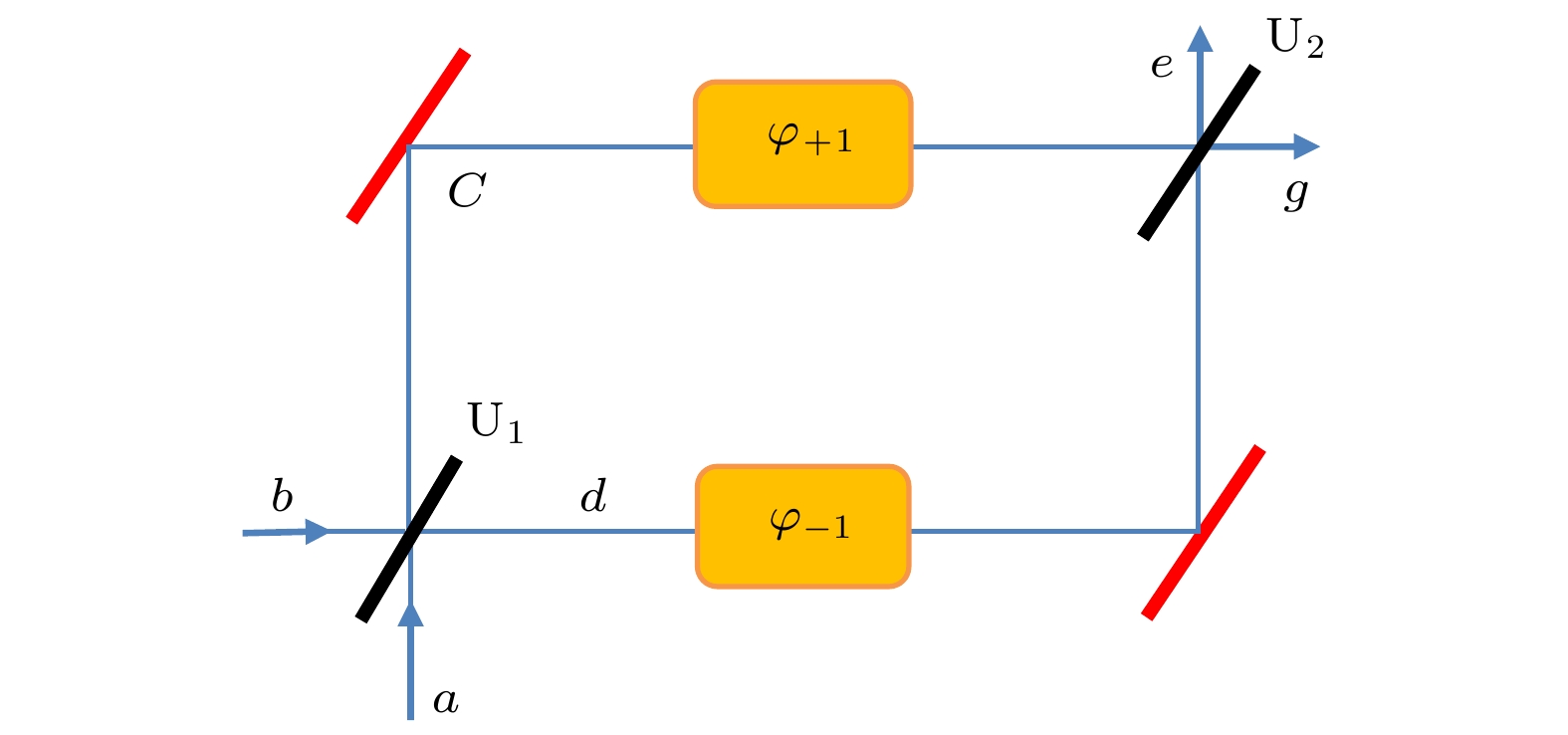






 下载:
下载:






















